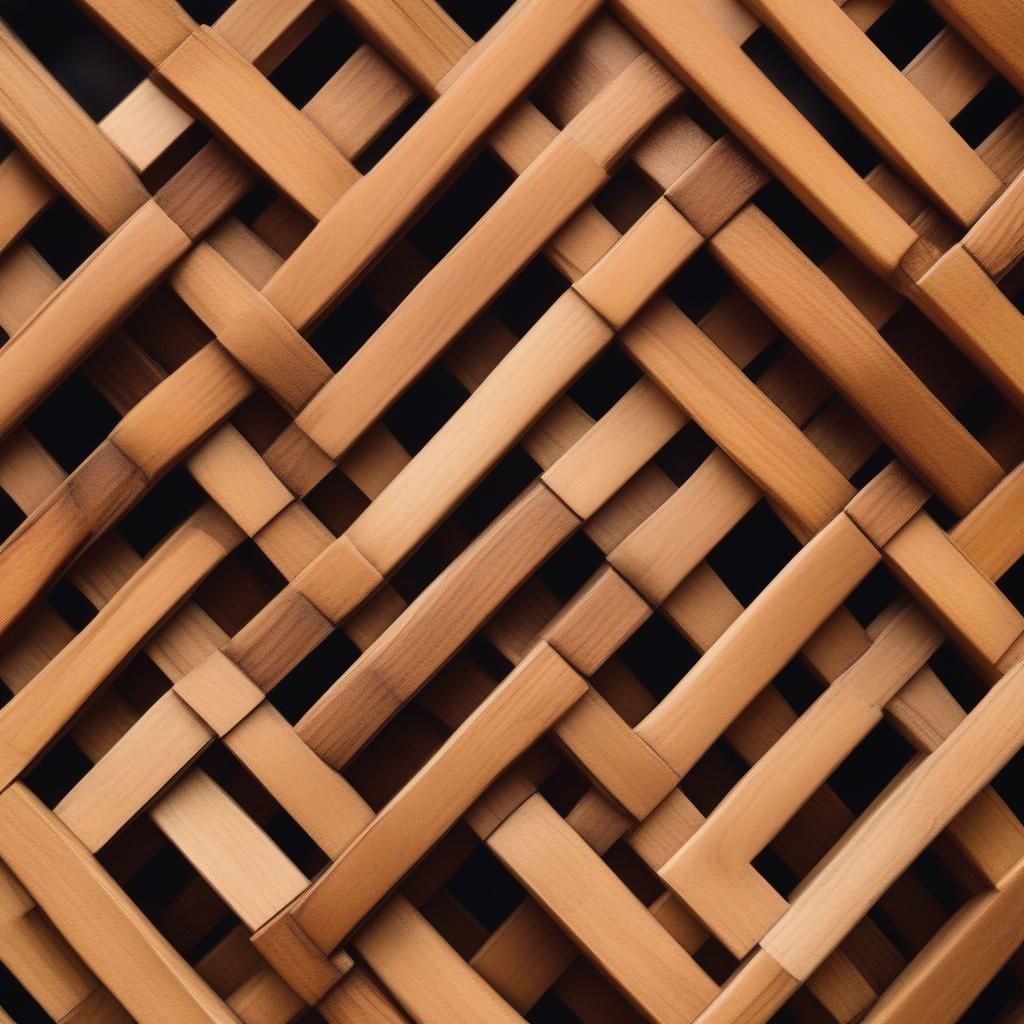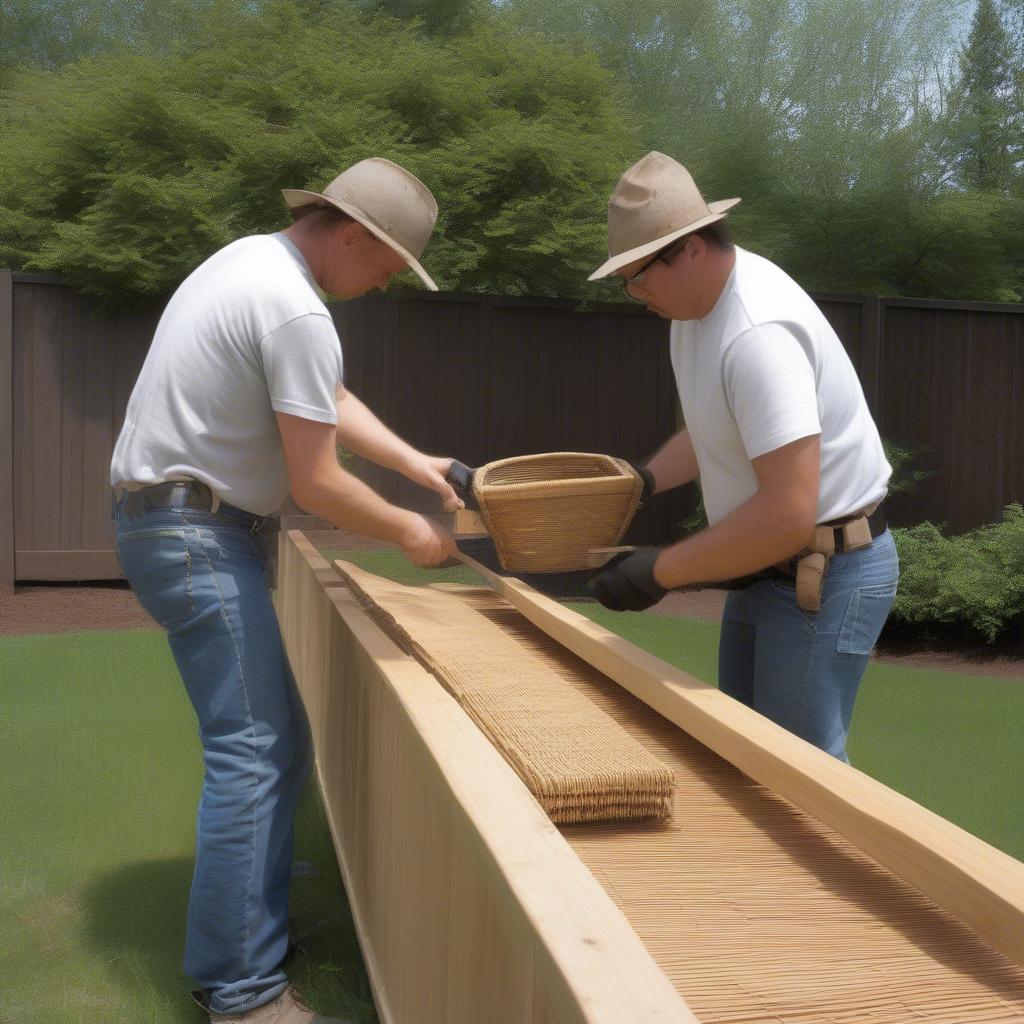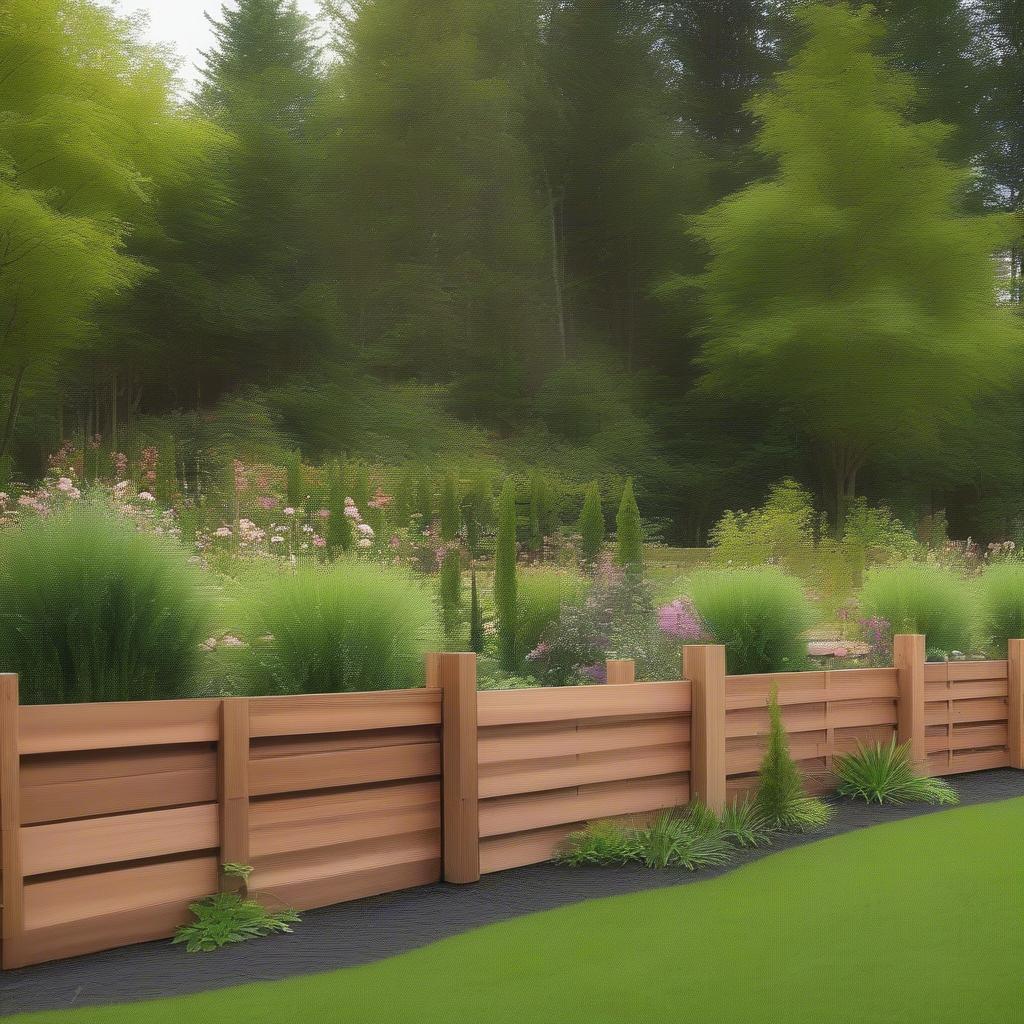Basket Weaving
Cedar Used for Basket Weave Fence
Cedar is a popular choice for basket weave fences due to its natural beauty, durability, and resistance to rot and insects. This article explores the reasons why cedar is so well-suited for this type of fencing and offers tips for choosing and maintaining a cedar basket weave fence. You’ll learn about the different types of cedar available, the benefits of using cedar for your fence, and how to create a stunning and long-lasting basket weave design.
Basket weave fences crafted from cedar offer a unique blend of rustic charm and practicality. The rich, warm tones of cedar enhance any outdoor space, while the tight weave provides privacy and security. But the advantages of cedar extend beyond aesthetics. Its inherent resistance to decay and pests makes it a low-maintenance option, saving you time and money in the long run. basket weave fencing panels are readily available for homeowners interested in this versatile fencing style.
Why Choose Cedar for Your Basket Weave Fence?
Cedar’s natural properties make it an ideal material for outdoor projects, especially fencing. It’s naturally resistant to rot, decay, and insect infestations, requiring less maintenance compared to other wood types. Plus, cedar weathers beautifully, developing a silvery-gray patina over time that adds to its charm.
- Durability: Cedar stands up well to harsh weather conditions, including wind, rain, and snow.
- Insect Resistance: Natural oils in cedar repel insects, reducing the need for chemical treatments.
- Rot Resistance: Cedar’s natural resistance to rot and decay ensures a long-lasting fence.
- Aesthetic Appeal: The warm, reddish tones of cedar complement any landscape.
- Sustainability: Cedar is a renewable resource, making it an environmentally friendly choice.
 Close-up view of a cedar basket weave fence showcasing the intricate weaving pattern and the rich, warm color of the wood.
Close-up view of a cedar basket weave fence showcasing the intricate weaving pattern and the rich, warm color of the wood.
Types of Cedar for Basket Weave Fencing
Several types of cedar are suitable for basket weave fences, each with its own characteristics. Western Red Cedar is a popular option due to its durability and resistance to decay. Northern White Cedar and Eastern White Cedar are also good choices, offering similar benefits.
Western Red Cedar: A Popular Choice
Western Red Cedar is renowned for its strength and stability. Its natural oils give it a pleasant aroma and contribute to its insect-repelling properties. This type of cedar is a favorite for basket weave cedar fence projects due to its longevity and appealing appearance.
Other Cedar Options: Exploring Alternatives
While Western Red Cedar is a popular choice, other options like Northern White Cedar and Eastern White Cedar offer similar benefits in terms of rot and insect resistance. These options might be more readily available or cost-effective in certain regions. Choosing the right type of cedar often depends on local availability and budget considerations.
Building a Cedar Basket Weave Fence: Tips and Techniques
Building a basket weave fence requires careful planning and execution. Start by selecting high-quality cedar boards and preparing the posts and rails. The weaving process involves interlacing the boards to create the distinctive basket weave pattern. basket weave bender board fence can offer a more flexible and visually interesting alternative to traditional straight panels.
“The key to a beautiful and long-lasting basket weave fence is using quality materials and proper construction techniques,” says John Carpenter, a master fence builder with over 20 years of experience. “Cedar’s natural durability makes it an excellent choice for this type of fence, ensuring years of enjoyment with minimal maintenance.”
 Workers installing a cedar basket weave fence, showing the process of weaving the cedar boards together.
Workers installing a cedar basket weave fence, showing the process of weaving the cedar boards together.
Maintaining Your Cedar Basket Weave Fence
Cedar fences require minimal maintenance, but regular cleaning and occasional sealing can extend their lifespan. Cleaning with a mild detergent and water removes dirt and grime. Applying a sealant every few years helps protect the wood from the elements and maintains its rich color. If you’re looking for smaller scale projects utilizing the basket weave technique, basket weave crochet granny squares offer a creative outlet.
“Regular cleaning and sealing are essential for maintaining the beauty and longevity of your cedar basket weave fence,” advises Maria Garcia, a landscape architect specializing in sustainable outdoor design. “These simple steps can significantly extend the life of your fence and protect your investment.”
 A finished cedar basket weave fence in a garden setting, showcasing its natural beauty and how it complements the surrounding landscape.
A finished cedar basket weave fence in a garden setting, showcasing its natural beauty and how it complements the surrounding landscape.
Conclusion
Cedar is an excellent choice for basket weave fences due to its natural durability, beauty, and resistance to rot and insects. By choosing high-quality cedar and employing proper construction and maintenance techniques, you can create a stunning and long-lasting fence that enhances your outdoor space. A cedar basket weave fence is an investment that adds value and beauty to your property for years to come. basket weave lattice can be incorporated to further customize the design and add visual interest.
FAQ
-
How long does a cedar basket weave fence last? With proper maintenance, a cedar fence can last for decades.
-
Is cedar more expensive than other fencing materials? Cedar is typically more expensive than pressure-treated lumber but less expensive than some composite materials.
-
Do I need to seal my cedar fence? Sealing is recommended to protect the wood and maintain its color.
-
How do I clean a cedar fence? Clean your cedar fence with a mild detergent and water.
-
Can I build a basket weave fence myself? Building a basket weave fence requires some carpentry skills, but it is a manageable DIY project.
-
What are the different styles of basket weave fences? There are various styles, including tight weaves, loose weaves, and variations using different widths of boards.
-
Where can I buy cedar for my fence? Cedar is available at most lumberyards and home improvement stores.
Need help with your basket weave fence project? Contact us at Hanoi, Vietnam or Tech Avenue, Suite 12, San Francisco, CA 94105, USA. We have a 24/7 customer support team ready to assist you.
